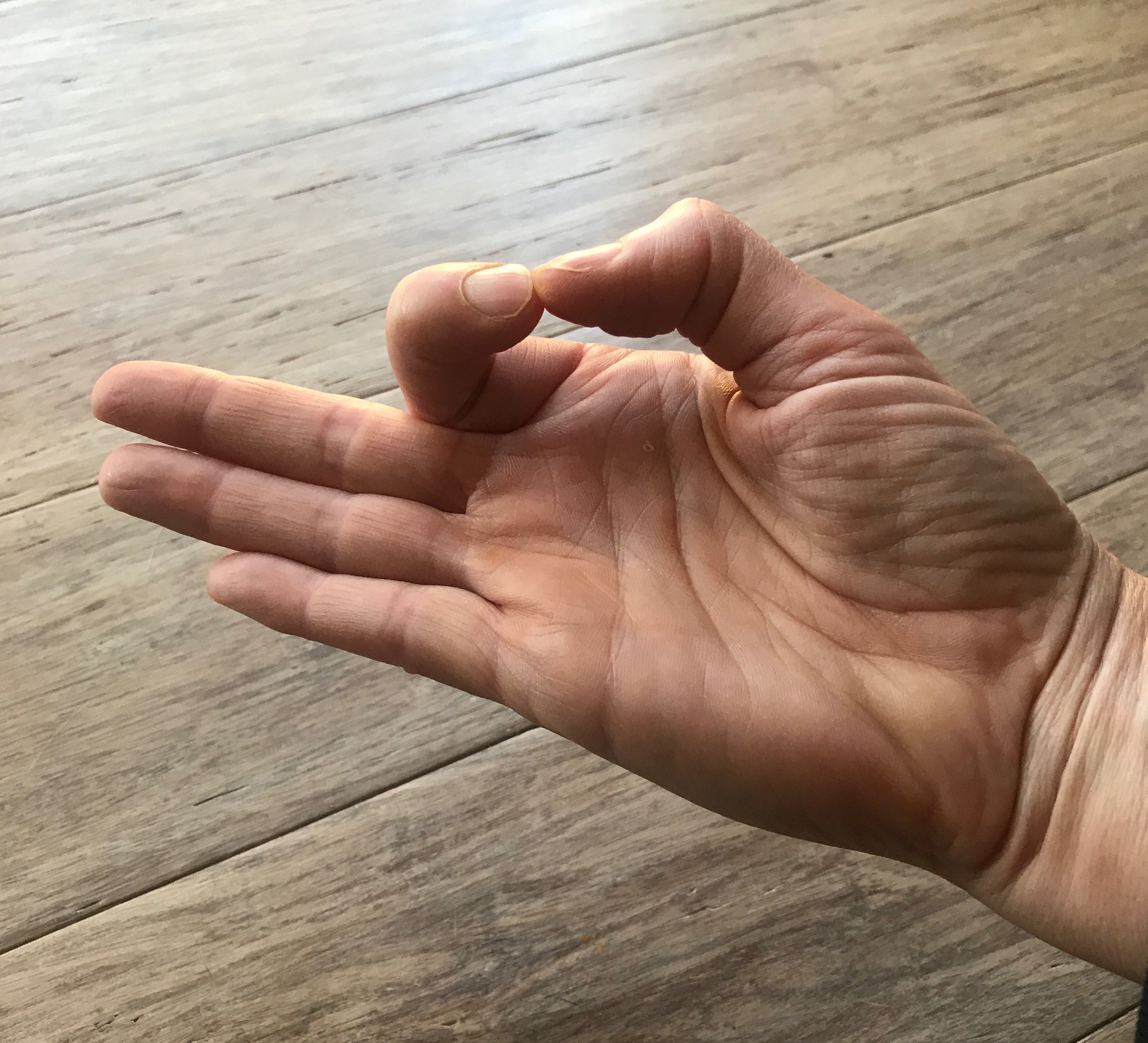Mudra - Hand Yoga for Healing
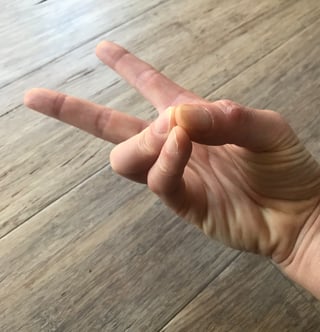
If you’ve ever placed your palms together in 'prayer position', you’ve practiced yoga mudra. Perhaps you’ve sat with your thumb and index finger together during meditation – that’s another mudra. Yoga students all over the world are practicing simple mudras every day, but most of us don’t know how and why these special hand gestures work. It’s time to change all that. Mudras are powerful, enjoyable and accessible to everybody – you don’t need to be fit and flexible to place your hands in a simple gesture. Here’s a rough guide to mudras and how to use them in your yoga practice.
What are Mudras?
The word Mudra means ‘gesture’ in Sanskrit and while mudras can be done with the whole body, the ones we’re most familiar with are the hand gestures, or Hasta Mudra. Hasta Mudras involve moving the hands and fingers into specific shapes that influence the flow of energy from the hands into the body and brain, creating an energetic loop.
The Mudra Effect
Mudras work by affecting the flow of energy (prana) in different ways. The fingers and thumbs each represent one of the five elements – Ether, Air, Fire, Water and Earth. When we position our hands in mudras, we affect the balance of these elements by influencing the flow of their energy through the fingers and thumbs.
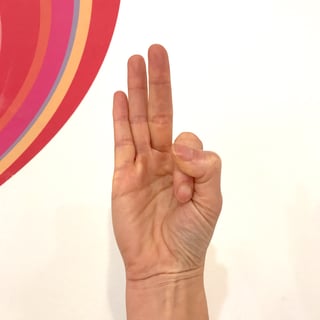
Vayu Mudra - Calming Vata Dosha
For example, the index finger, which corresponds to the Air element, is turned down in Vayu Mudra, balancing the Air element throughout the body. This is good news for those of us who suffer from Vata imbalances – busy minds, too much rushing around and feeling ungrounded. These are classic symptoms of the Air element being out of balance and Vayu Mudra can help us feel calmer and more grounded.
Are you ready to add mudras to your yoga practice? Try these 3 easy techniques:
- Improve concentration in meditation with Chin Mudra
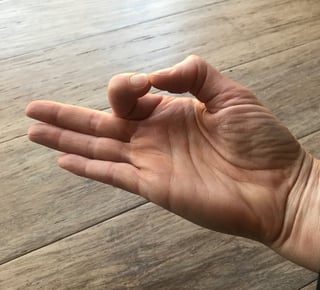
Chin mudra is a classic meditation mudra. Placing the tip of the thumb and index finger together while lengthening out the remaining three fingers is excellent for increasing concentration and raising energy levels. Try practicing Chin Mudra in Vrksasana (Tree Pose) to help you focus on maintaining steady balance.
- Rise above your troubles with Padma Mudra
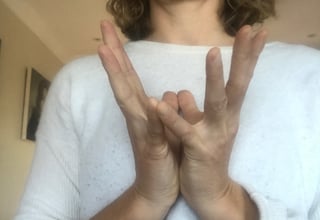
Padma (Lotus) Mudra behaves exactly like its namesake the lotus flower. Just as the lotus flower rises up out of mud, Padma Mudra helps you rise above the murky emotions of attachment, desire and fear to emerge pure and peaceful into the light. Start by bringing your palms together in ‘prayer position’ (Anjali Mudra). Keep the heels of your hands, thumbs and little fingers touching as you spread out all of your fingers and draw them out and away from one another.
You can experiment with practicing Padma Mudra when you do Virabhadrasana 1 (Warrior 1). Step one foot back, keeping your hips squared to the front of your mat. Instead of raising the arms, bring your hands into Padma Mudra at the heart centre. Breathe into your heart as you hold the pose, bringing peace and purity to your experience of Warrior 1.
- Pushan Mudra for heathy digestion
According to Ayurveda, yoga’s sister science, good health begins in the gut. When your digestion is strong, your body stays healthy. If you experience constipation or bloating, Pushan Mudra can help to regulate the digestion and elimination. Unlike most mudras, the gesture for Pushan Mudra is different on each hand. The right hand makes a ‘receptive’ gesture while the left hand is held in a position that corresponds to elimination.
Right hand: Bring the tips of the ring and little fingers to touch the tip of the thumb. The index and middle fingers are held straight out.

Left hand: Bring the tips of the middle and ring fingers to the tip of the thumb. The index and little fingers both lengthen out.
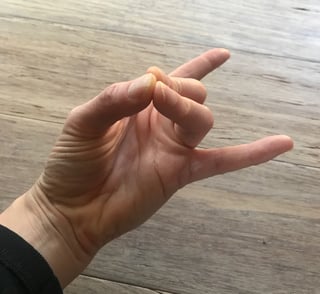
To kick-start sluggish digestion, try performing Pushan Mudra while sitting in Hero pose (Virasana). Kneel down with your knees together, ankles apart and the fronts of the feet down on the floor. Sit back onto the floor between your feet or, if this is too strong for your knees or ankles, place a block or cushion between your feet and sit back onto that. Virasana is well known for supporting healthy digestion and, when paired with Pushan Mudra, you'll have a powerful tool for creating gut-health at your fingertips.
Learn more about healing mudras in a short video with Nikola Ellis, senior yoga therapist.

